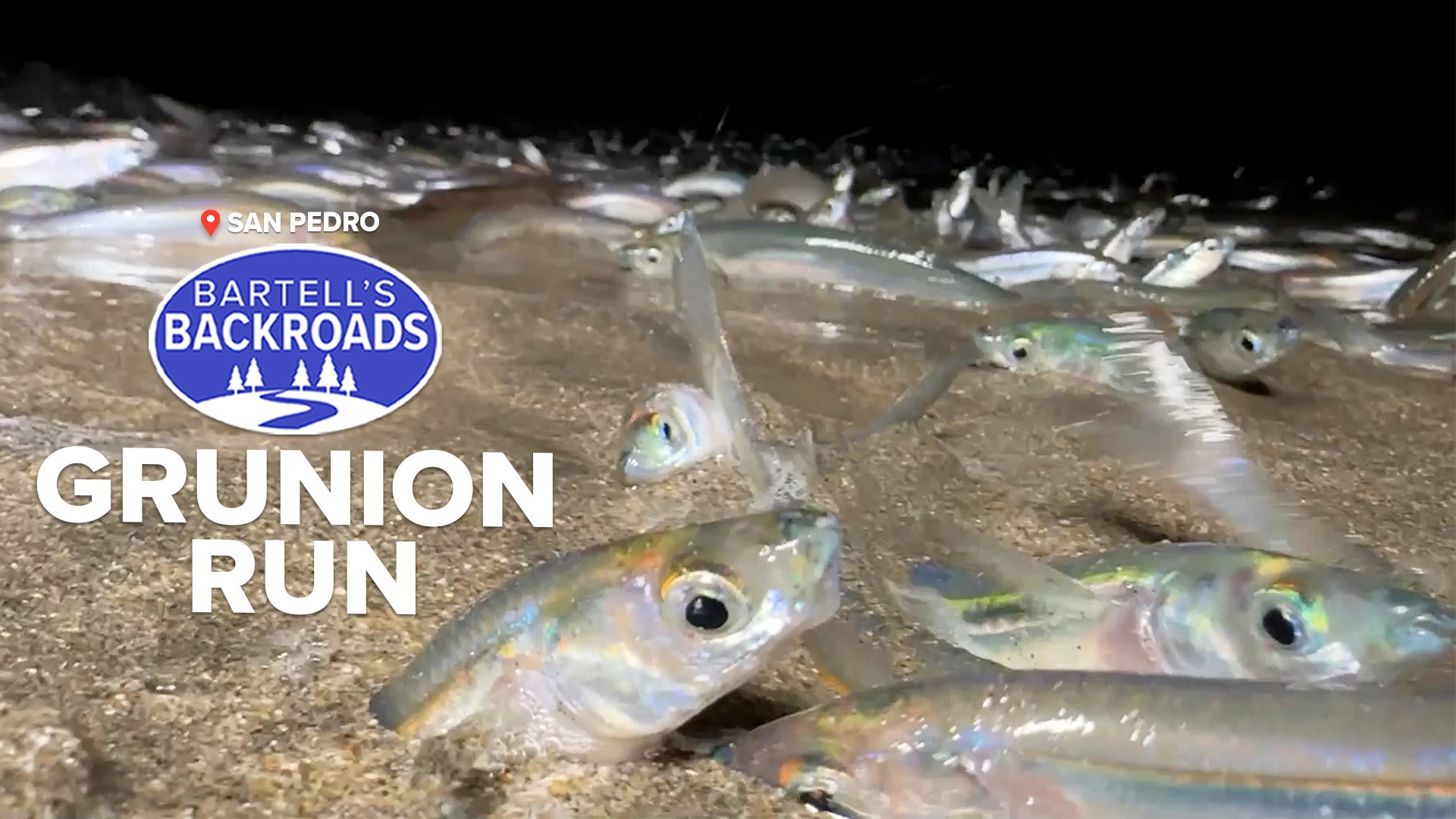SAN PEDRO, Cali — When the moon and the tide are just right in Los Angeles County, flocks of Black Crown night herons start to gather along the shore in San Pedro. It's also when Jim DePompei heads to the beach. He’s program director at Cabrillo Marine Aquarium and a small group of curious spectators have come to help him catch the protected grunion fish.
“So, we have a special permit to capture about 10 grunion fish to keep them in captivity,” said DePompei.
He does not use a net, fishing pole or a boat because the grunions come to him.
“If you look out in the water, you will see even more grunion waiting to come out of the water and onto the beach,” said Depompei.
This is the annual grunion run. These little 6-inch swimmers are among some of the only fish in the world who beach themselves on purpose to mate.
“This is what you call sex on the beach,” said DePompei.
The love sessions take place between the months of February and August. It only happens a few nights a year and the Cabrillo Marine Aquarium invites the public to witness what is quite possibly the oddest mating ritual in the marine world.
“Here we have a female digging itself in the sand and a male wrapped around the female and that male is depositing milt (sperm),” DePompeii explained.
TAKE A TRIP ON BARTELL'S BACKROADS:
► See an interactive map of everywhere John has visited on the backroads
► Watch all of the Backroads videos
► Follow John on Facebook
To better explain what goes on under the sand, DePompei likes to take visitors inside the Cabrillo Marine Aquarium to see the eggs hatching under a microscope.
“As we add ocean water to the sand, you should see the eggs pop out of the sand,” said DePompei.
He says grunions need to lay eggs and fertilize them in dry sand. The only way to do it is when moon is just right and the tide is at its highest.
“They know when it is the new moon and full moon and they come up a couple days after the new moon and full moon,” said DePompei.
During the full moon and high tide, the grunions lay and fertilize eggs. When the tide starts to recede, those eggs start to develop. Here’s where the magic happens: 10 or 15 days later a new moon brings back the high tide again, and the water triggers the eggs to hatch.
“When the water reaches them, it will remove the sand and they will hatch out back into the ocean,” said DePompei.
Grunions are mysterious fish and not a lot is known about their life in the ocean. They rarely end up in fishermen’s nets or seen in the wild, except for when they mate on the beach.
“Female grunions can be out of water for five or 10 minutes and she’ll totally be fine,” said DePompei.
Grunions are easy prey for birds and it’s one reason they are protected. Humans can fish for grunion, but the season has strict regulations and only lasts a few days a year. Luckily for the grunion DePompei caught, they are headed to the aquarium where they will be studied and displayed to the public for educational purposes.
“They are very unique. They are the only known fish that dig in the sand out of the water and lays eggs,” said DePompei.
Want to see it for yourself? Log onto the Cabrillo Marine Aquarium website for the date of the next grunion run.
MORE TINY FISH ON THE BACKROAD: In the balmy waters of Salt Creek lives a school of pupfish, Death Valley’s largest fish.

















